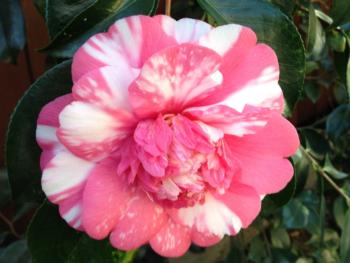Unused stories
Growing In Your Garden Now - Feeding and care of acid-loving plants

The three main acid loving, flowering plants we see in Marin County are azaleas, camellias and rhododendrons. They provide glorious punches of color early in the year and often give us color when there is little else flowering.
They prefer an acidic soil with a pH of below 7. Soil pH affects the availability of plant nutrients and those nutrients are held in different forms dependent on the soil pH. A more alkaline soil, i.e. pH above 7 can lead to stunted growth and yellow leaves in these plants
In addition the soil needs to be well- drained and rich in organic material. Mulching with several inches of acid materials such as pine needles, oak leaves or redwood bark can help and also keeps the roots cool. Make sure to keep the mulch a few inches away from the main stem to avoid rot.
The choice of plants is overwhelming: Sunset Western Garden book says there are over 3000 named kinds of camellias and over 2000 currently available varieties of rhododendrons. Early spring and fall are good times to plant. Make sure the soil is loose and well drained and work in plenty of organic material.
So once you have made your pick from that incredible array pick your site carefully.
Filtered shade with shelter from wind and full sun are key for azaleas though some rhododendrons like sunnier spots. The root ball of the plants needs to be slightly above soil level and once firmly in the ground mulch carefully.
Commercial acid plant food will help to encourage flower production in the next year. This can be applied right after flowering once a month for several months or once after flowering and again in the autumn. During periods of drought make sure the soil is damp before feeding and avoid fertilizing plants that have been stressed by drought. A 0-10-10 fertilizer will boost bud production. Azaleas have low nutritional requirements so only a surface application of fertilizer is needed. If your soil pH is above 7 you may need to give the plant some iron. Read the application instructions carefully before using.
Good sanitation under the plants will help to keep them healthy. Pick up any flowers that have dropped and other rotting materials especially under camellias to avoid development of camellia petal blight.
Azaleas, camellias and large flowered rhododendrons should be pruned in the spring after flowering. As with most plants remove dead or weak wood. Leggy branches can be pruned back to side branches or to dormant buds.
Any dead flowers can also be pinched off.
By Lynne Jennnings
